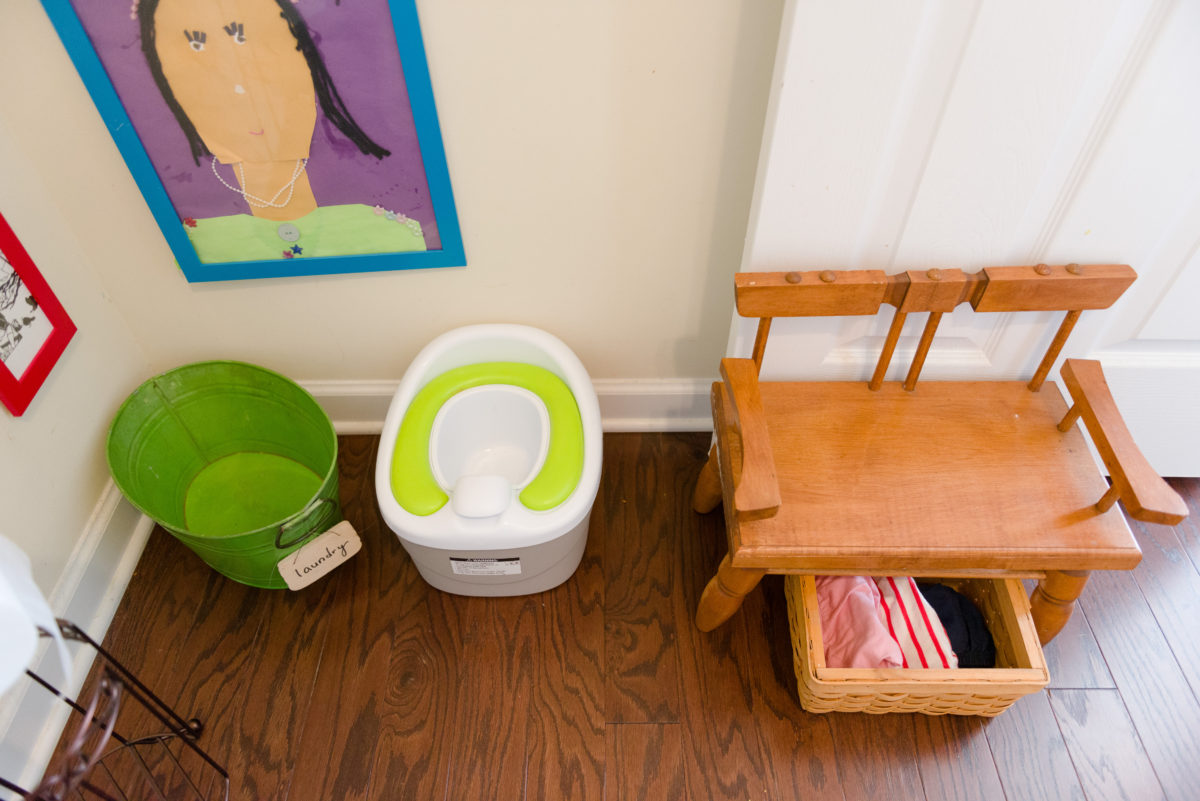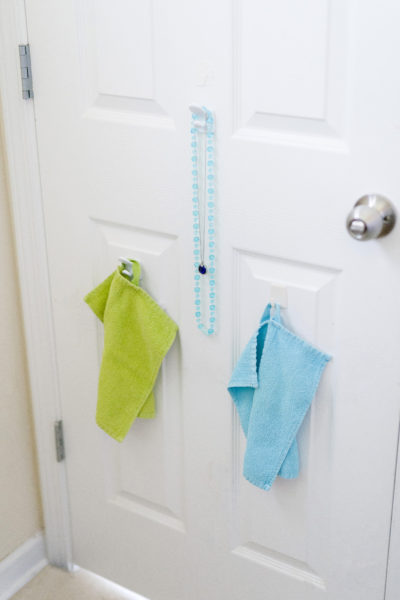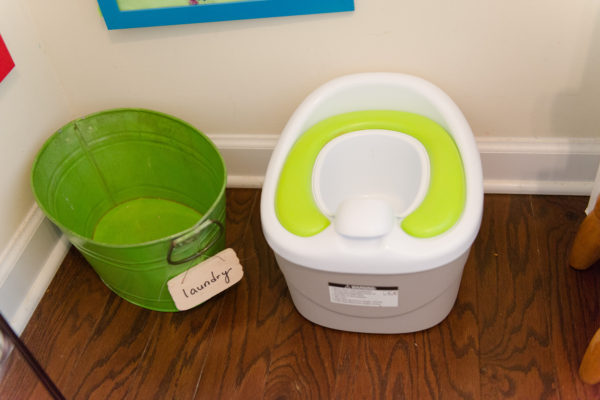May 08, 2018

Potty training. A term that often raises feelings of dread or insecurity in the minds of many parents. You’re not sure how to go about it. You hear a variety of stories from friends and family ranging from tales of woe to instant success.
It makes you wonder: How to start? When to start? What method to try?
You’ve probably heard of a wide range of strategies, from going “cold turkey” to sticker rewards, to musical potty seats and resources that promise a no fail “potty boot camp”.
Is it really such a difficult process?
What is the Montessori approach to toileting?
Let’s start with removing the word training from the dialogue.
When we work with young children we are presenting them with opportunities to develop and understand their abilities. Presenting them with the toilet is no different. To begin, we remove the presence of diapers and introduce thick cotton underwear so that they can begin to experience the true sensation of wetness. If a child is wearing cloth diapers, this feeling will become familiar to them quickly. For those children who wear disposable diapers, this sensation will take longer to establish itself. Up to this point, a child wearing disposable diapers rarely feels the temperature difference between wet and dry since the composition of disposable diapers is designed to wick away wetness as soon as the child produces it.
To help the child along the path to toilet independence, we must allow them to come to awareness.
The idea of toilet training implies that we must condition the child to act in a manner that is not in their nature. Our true goal, is to present the child with an environment that will support the growing awareness of their body’s need to eliminate waste.
Before we begin to prepare the environment, we must first prepare ourselves.
Are you ready? Then ALL ABOARD!
Assisting a child on their journey to toileting independently can only be truly embraced when the adult is fully committed to the idea. As with all Montessori tips and suggestions, the magic word is consistency. Confusion and frustration around the use of the toilet usually occurs when the child is receiving mixed messages. If one family member is offering underwear when another is offering a diaper, the child will begin to reject the change. Before offering the child the use of the toilet, take time to have a conversation with spouses, partners and teachers to ensure that everyone will be on the same page and follow the same approach.
Language and attitude are key.
In a Montessori classroom, body parts and bodily functions are given their true names and referred to as such when in conversation with a child. If a child urinates on the floor or has a bowel movement while wearing their underwear, we calmly communicate to them, “You are wet. (You’ve had a bowel movement) Come with me to the bathroom and we’ll change your underwear.” Urine and fecal accidents will be common when starting toilet awareness so keep in mind your own feelings about handling and cleaning waste. Giving the child the impression that a urine or fecal accident is upsetting to you will affect the child’s willingness to wear cotton underwear. The tone of voice should be kept calm and matter of fact. The goal is to allow the child to make the connection between the change in the feel of their underwear and knowing how to help themselves.
Timing is important.
Deciding when to begin toilet awareness with a child should factor a time when their daily schedule will be as predictable as possible. Events such as taking an out-of-town vacation, moving to a new house, a major cultural/religious holiday celebration or preparing for the arrival of an infant will present difficulties in offering a consistent setting and routine for using the bathroom. As we say in Montessori, children are more interested in the process of how things work, rather than the product. When they begin using the toilet, they will be attracted to the order of the bathroom and need time to take in the new steps to the use of the toilet, cleaning oneself when finished and washing hands at the sink. This process cannot be rushed.
Now, let’s prepare the environment.
In many of our posts, we talk a lot about the preparation of the child’s environment. We want to make sure that we offer the child functional tools and appropriately sized furniture. When offering the toilet to a young child, we follow the same principles. Take a look at the bathroom in your home through the eyes of your child. Can they sit on the toilet by themselves or will they need a step stool? Will you invite your child to sit on the toilet with a seat converter or introduce a potty seat? Can the child reach the sink to wash their hands or will a step stool be needed there as well?
We want the child to be able to wash their own hands independently, so what kind of soap is available to them? Can they dispense the soap themselves or would they need your help? If you have a bar of soap in the bathroom, is the soap small enough for little hands to use or should it be cut in half?
Look at the placement of your hand towels. Can the child reach the towel themselves? Could they hang it neatly when finished? This is a good time to think about using a non-damaging temporary hanging solution, like a command hook, so your child can dry their hands all by themselves.

Invite your child to help you set-up their bathroom space. By including them in the process, you are also reducing any fear or anxiety the young child may have about using the toilet. Toileting is an exciting time in the life of your young child. Keep them involved so they can feel that this new change is a natural part of their development.
Toilet Entertainment?

When you start looking for a portable toilet (also known as a potty seat) you will find a wide range of styles and features. In order to stay true to the goal of consistency on the journey to toilet awareness, choose a potty seat that is simple in design. The focus of using the bathroom is for the child to relieve the pressure they feel in their bladder and associate those feelings as a sign that they need to sit on the toilet or potty. Choosing a potty seat that has cartoon characters, makes music or appears more like a toy than a toilet draws away that focus and the child will expect to be entertained by any toilet or potty seat that they use and may resist sitting on a potty seat that does not have extra features.
What about a few books? Sure! A few books in a basket for the child to look at is fine as long as the time spent with the child while on the toilet does not become a “variety show” of songs, books and games. Better to save story time and song singing for when the child is finished in the bathroom.
Environment all set-up? Ready to start? Part 2 in this series will cover preparing the child, clothing as a vital tool and how to support toilet awareness while on-the-go.
Coming soon – Part 2
Toilet Awareness – Preparation of the Child
Don’t miss any future posts! Subscribe today and join the Bellas Casa family.
